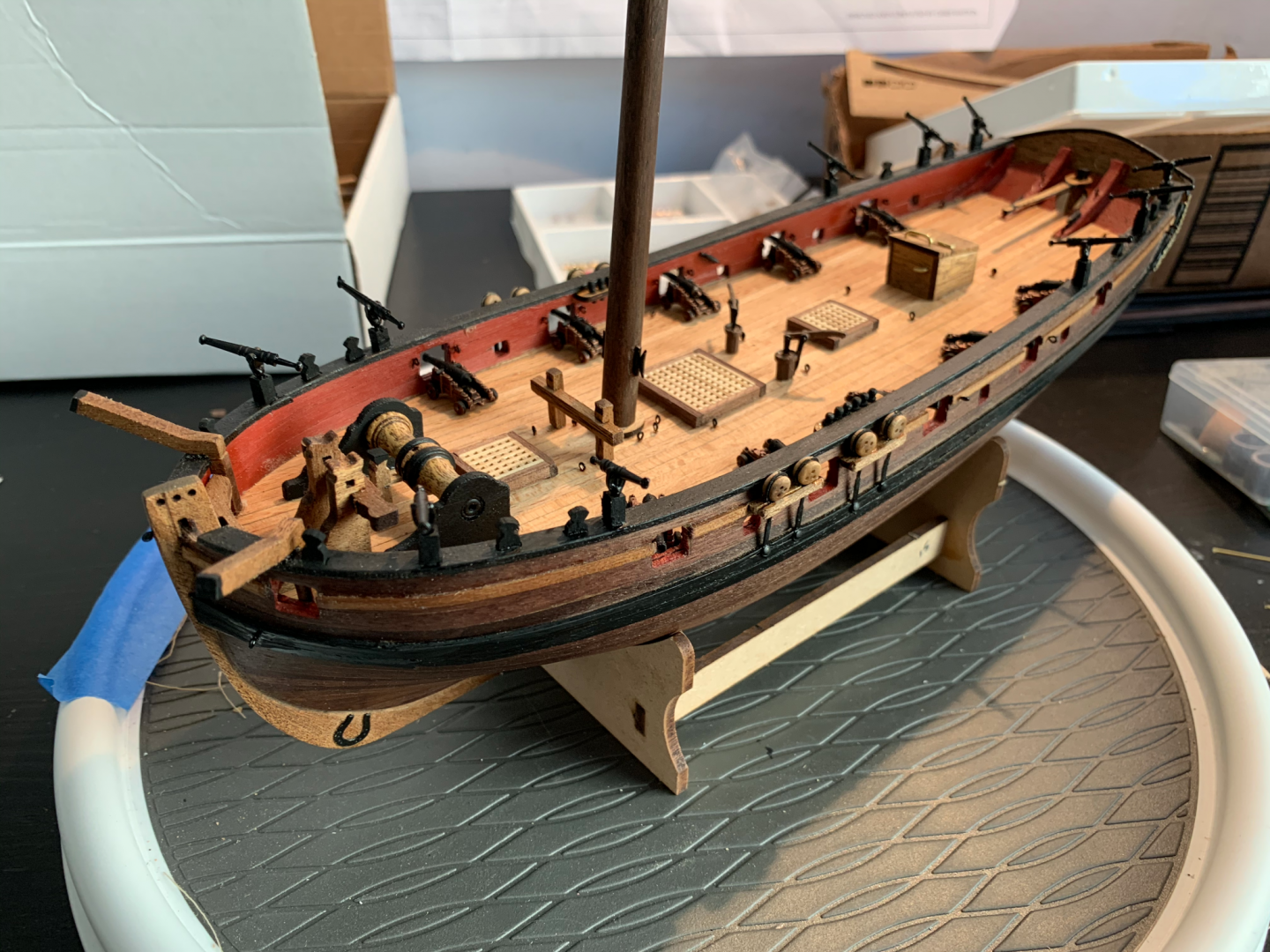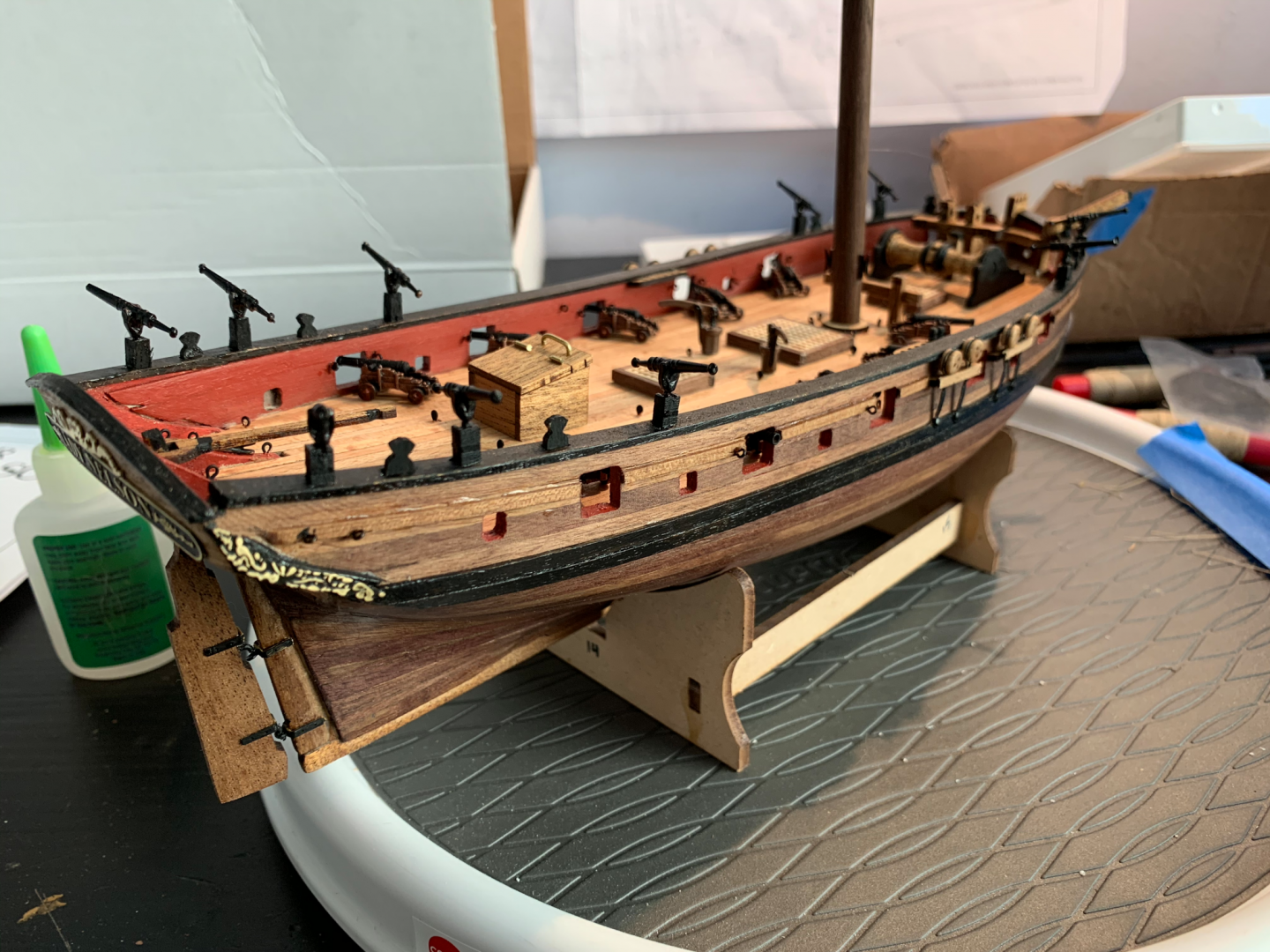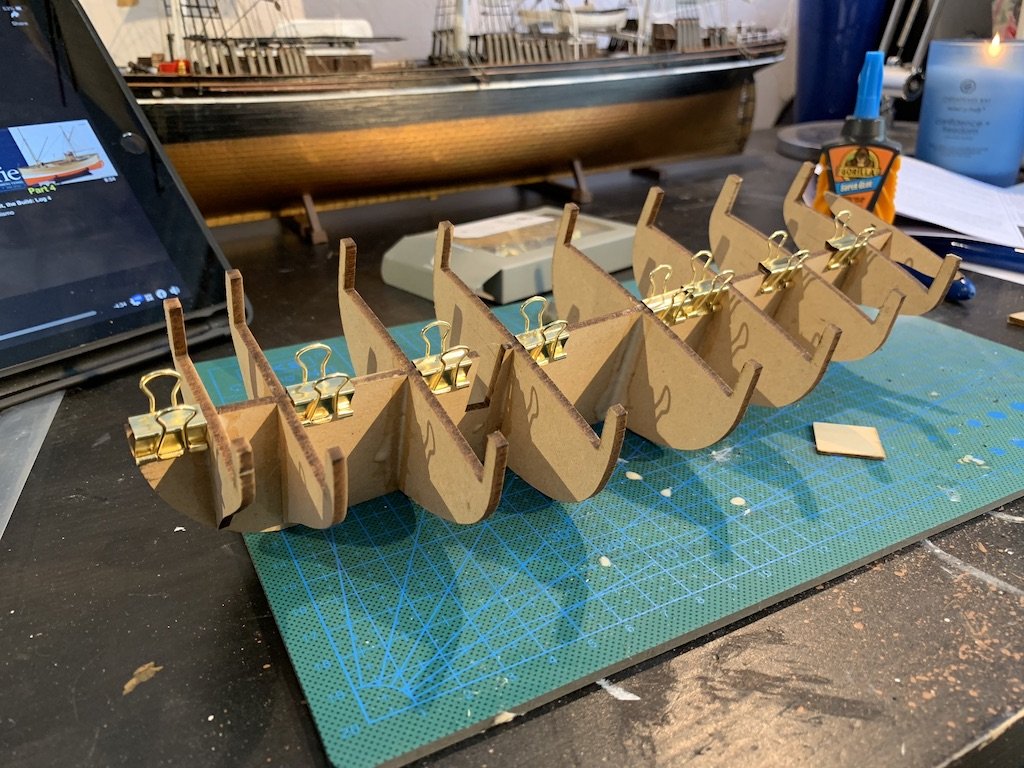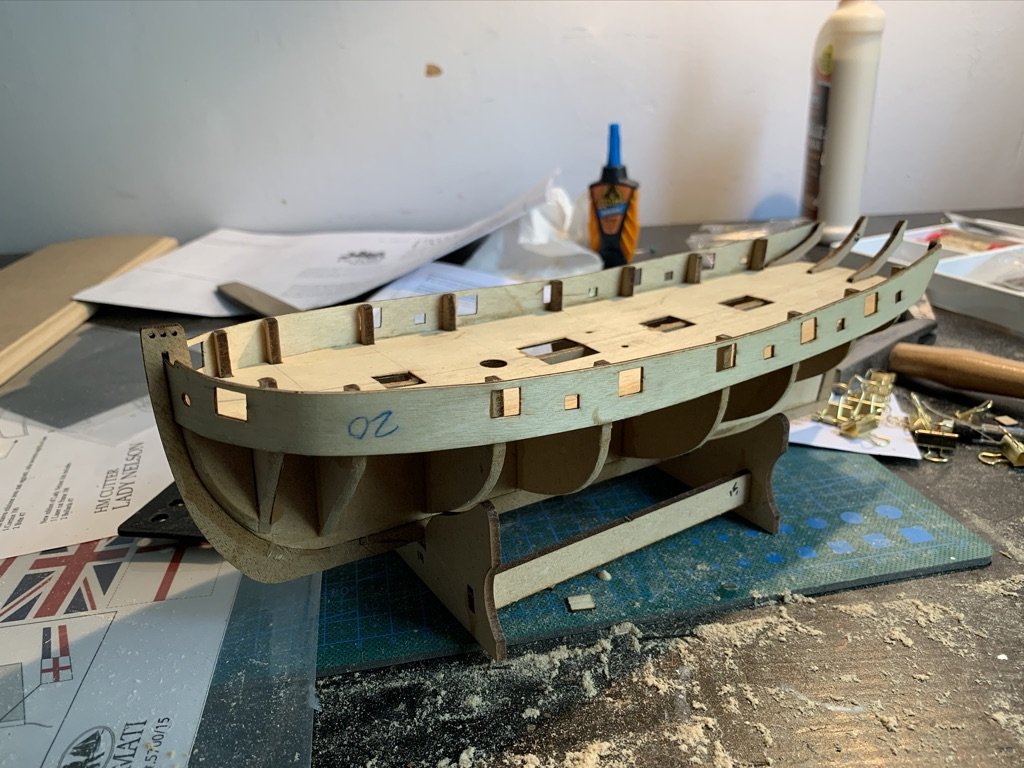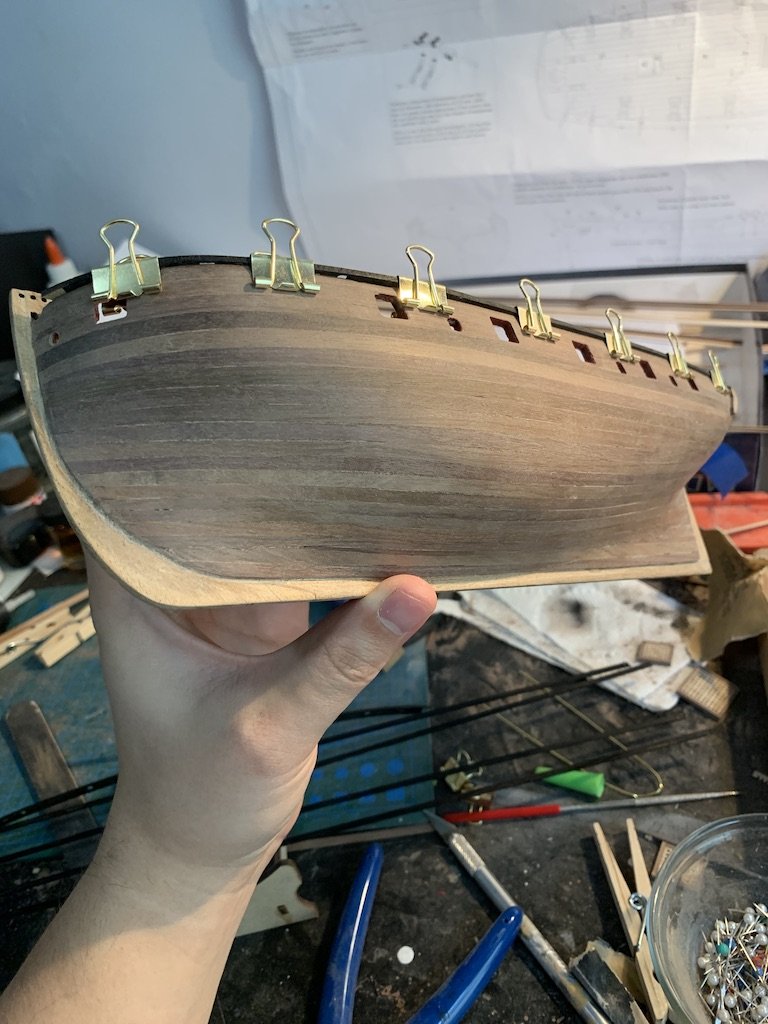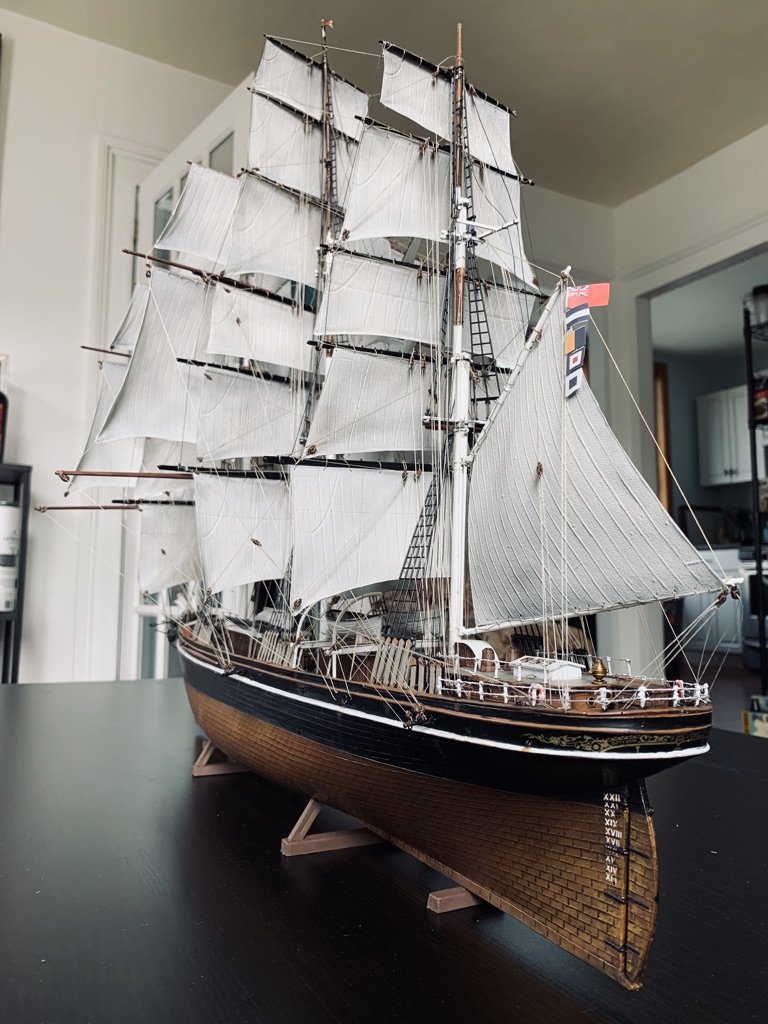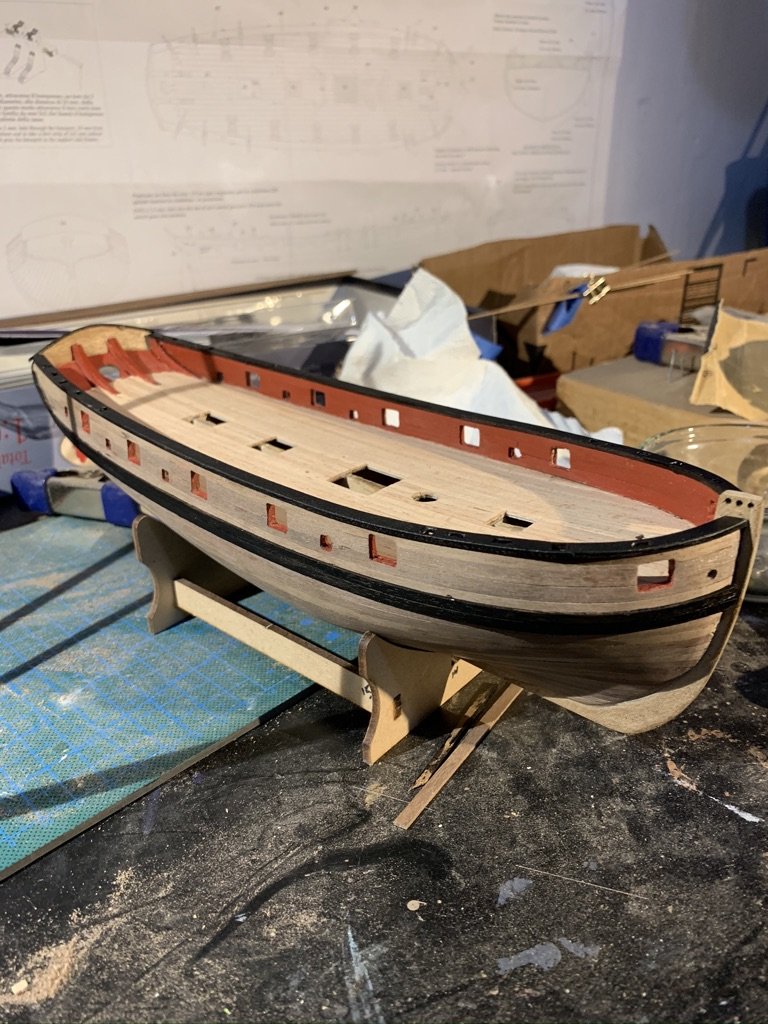After completing some plastic model kits, I decided I needed to try a wooden model. Internet research pointed me to the Lady Nelson by Amati and I'm really happy with the quality of materials and clarity of instructions. Much better than the plastic model kits! This was a challenge for me also because I have no real woodworking experience at all, but I'm really loving it so far.
I started this several weeks ago and only recently decided to join the forum, so most of the woodworking, finishing, and painting is out of the way, but to catch you up:
I mostly followed the Modeler's Shipyard DVD that Amati has put online on their Facebook page. I found it to be a really helpful resource.
I feel okay about the fairing job on the hull, but knowing now how planks lie I'm sure I'd take a bit more time and care with my next ship.
One of the biggest mistakes I made was tapering the first layer planks from the wrong bulkheads, so there's a little bulge towards the bow. It didn't end up causing too much of a problem after sanding and filling.
Not very proud of the first layer of planking, but it was sufficient in providing a solid smooth base for the second layer, which I took much more time and care with.
The second layer went on like a dream. I was more careful with the tapering and also set up a rather crude jig to edge bend the planks with steam. I simply soaked the planks for a half hour and then used an electric iron as I bent them around the jig to steam the water out and lock the curve into place. I was a bit sloppy with the first two planks above the garboard plank (shoving splinters instead of spiling properly). I used wood glue/sawdust for filler, but WAY overfilled without removing excess and ended up sanding a layer of hard dried glue off the hull for a whole day.
IMG_3090.HEIC
I finished the hull with Tung oil, which was satisfying to say the least.
IMG_3079.HEICIMG_3086.HEIC
Here she is today, with most of the deck furnishings painted or stained and ready to be glued on. The masts and yards (which I had to taper and shape by hand) are finished and painted.
What I want to do differently next time:
1. Find better ways to make sure the false deck lies at the proper curve against the bulkheads. I tried pins but they were extremely difficult to get through the deck, and many of them came out while the glue dried. So the deck is less curved than I'd like, and the gunports don't sit at an even distance from the deck.
2. Tapering the planks from the proper location on the first layer of planking
3. Not overdoing the filler that I used between the planks on the second layer of planking (or just making the planks fit tighter), so as not to leave glue on the surface of the hull. I sanded most of it off, but the tung oil revealed some missed spots.
3. I used CA glue with the second layer, which was fast and convenient as I didn't have to do as much shaping of the planks. It was an okay situation, but next time I'll try using wood glue and pins, which will help me get a tighter fit between planks.
4. Break up the deck planking into realistic lengths instead of having them run the full length of the ship.
There's a lot more to add to this list, but those are the main issues I've run into so far. That, and just not having money or a car to go out and buy the tools that make things easier! Any constructive criticism or advice moving forward is more than welcome.
Thanks for reading!


